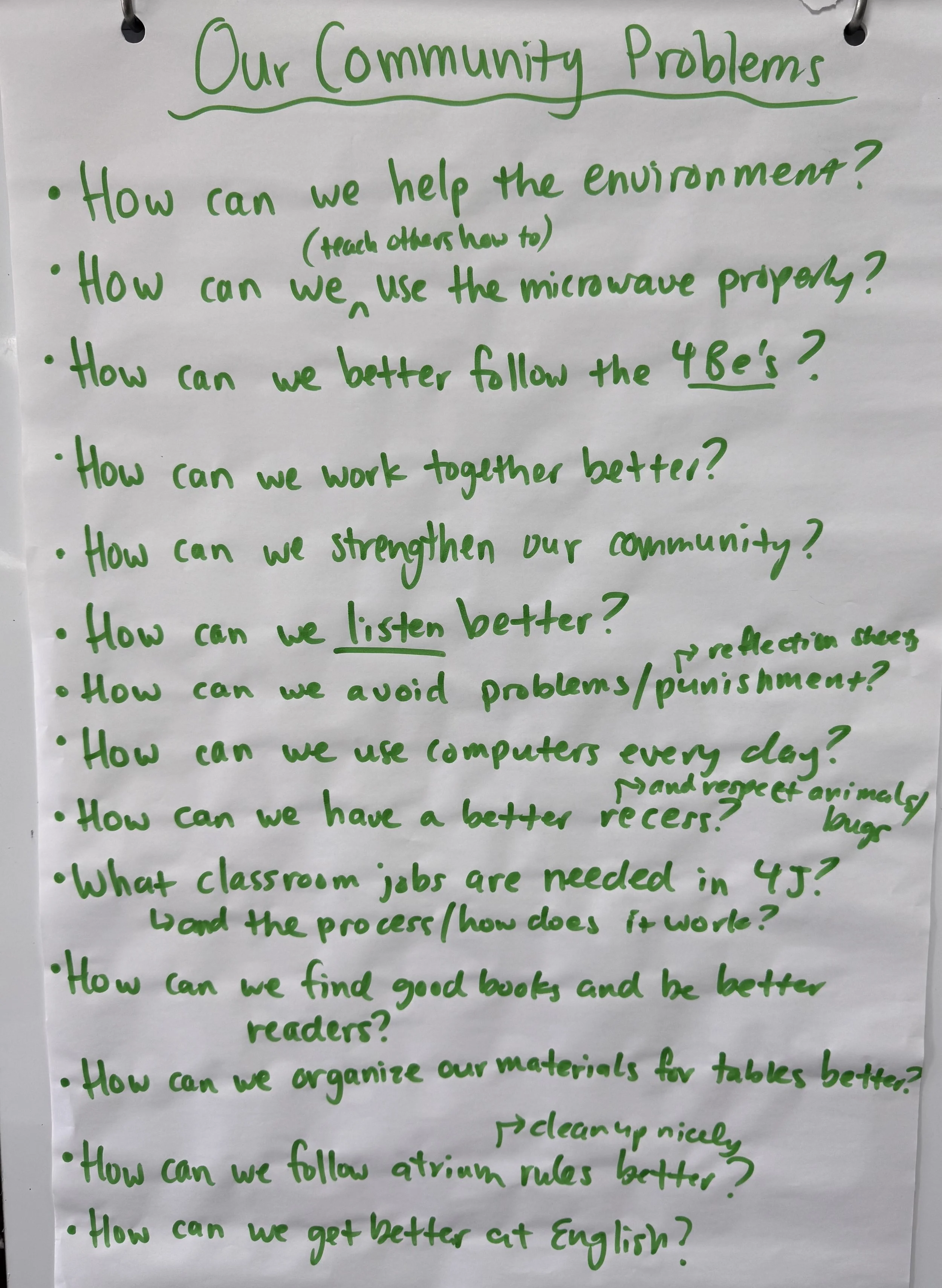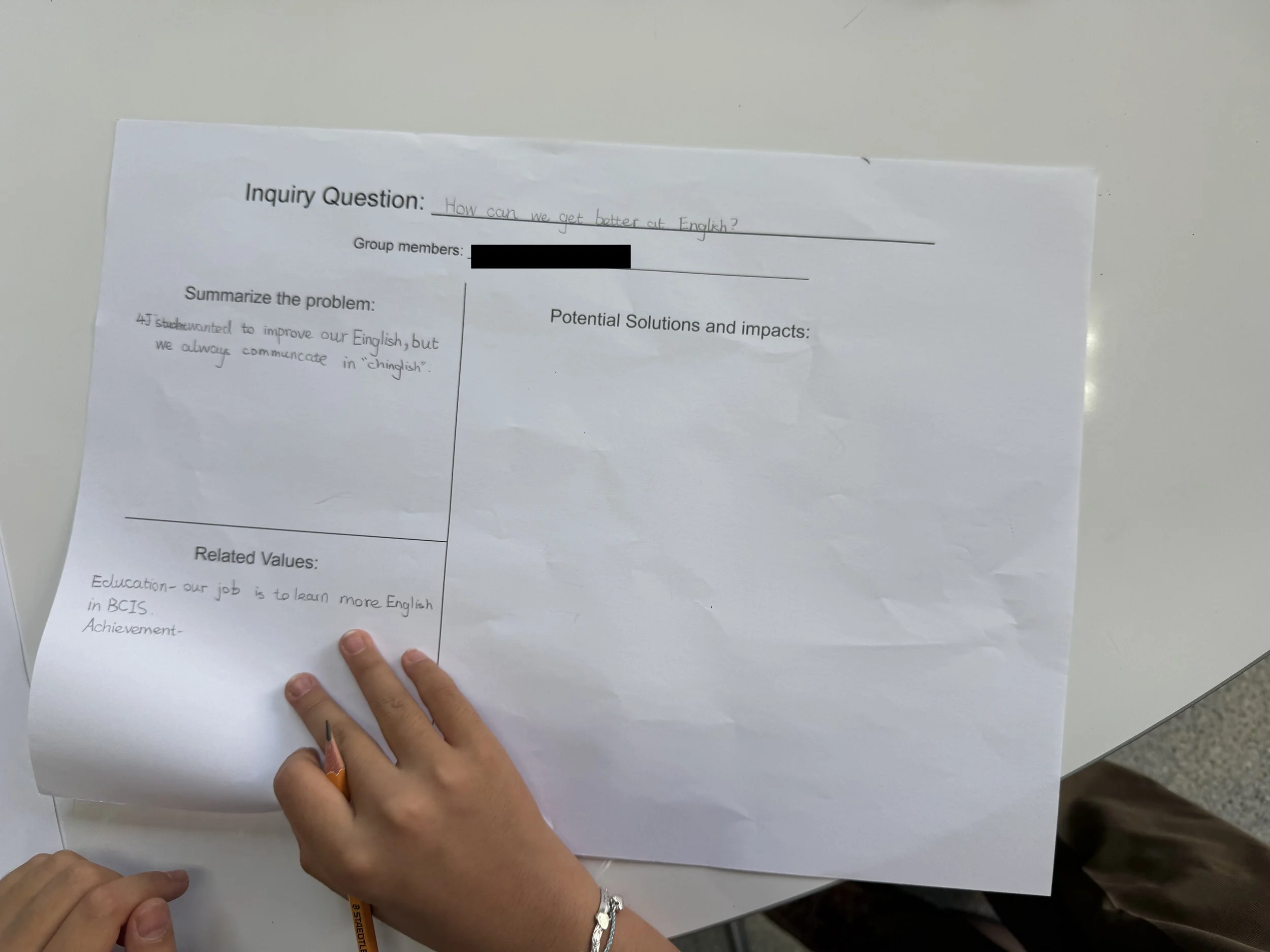Uncovering the Central Idea and Planning Action - Going Further
As we were working through the unit, we were uncovering the meaning of what makes a community and how communities work together. What are our communities? How do we know? What do they look like?
In China, community is often translated as their apartment compounds (how I would describe it in American English). Many students also said it’s who you work with. I wanted to expand this definition to connect to identities and values (see previous post about identity and values lesson). We discussed how maybe some students are interested in Minecraft so they could create a Minecraft community, or those who own or love cats.
As we progressed through the unit we also studied, in-depth, a text about banning single use plastic in Australia (post coming soon!). We use these mentor texts as knowledge texts to build students’ background knowledge as well as connect to language foundations such as pronouns, clauses, prepositions or language learning skills like tense or vocabulary.
So far we covered three main ideas we wanted students to learn about this unit: communities (and identities), values, and decisions.
I am a fan of not releasing the central idea for a unit (sometimes never, but using it’s essence to guide student understanding). For this unit, I wanted to see what other ideas they could fill in the blank:
Communities make decisions, based on their values, to ________________.
Students thought and experimented with different ideas. Some ideas that came up (see gallery below):
to recycle
to make the community stronger
to be kind
to help other communities
to help other people who need help
to reach their goals
to have great ideas to share
to improve
to do the things they need to do
The actual central idea? Communities make decisions, based on their values, to solve problems.
I’d say that was a bingo! I told students they were all correct as I revealed the central idea because they all touched on problems or things people need to do when there is a problem.
After we had a discussions about what communities do when there are problems: make a decision! You don’t make a whole decision for a community by yourself. The community has to practice strong listening and empathy skills to make sure everyone’s voices are heard.
We then talked about our own community at school. We’re a community here, so don’t we have a say in problems and solutions?
We then brainstormed some problems we’ve noticed at school or the classroom.
We came up with this list:
After going through these ideas, I had them write down on sticky notes their passion for what problem they could make a decision about. After this, I put them into groups to then work on brainstorming what the problem looks like and what decisions they can make to improve our community.
I printed out this very simple graphic organizer (first unit of the year, open-ended, and EAL friendly) to connect back to summarizing as our literacy skill and the values to make sure we kept coming back to what’s important to us. (Google Doc link)
Students began to collaborate in their groups and think about the summary: what really is the problem? What does it look like? How do we know? Who is impacted? We also learned about Somebody Wanted But So Then as well as the 5 Ws so students could take a look at the problem from different angles.
While they were working on these, I would confer with each group and try and tease out more specifically or clearly their question they were looking at.
They continued to work on these projects through the end of the unit! A final reflection update will be posted!














